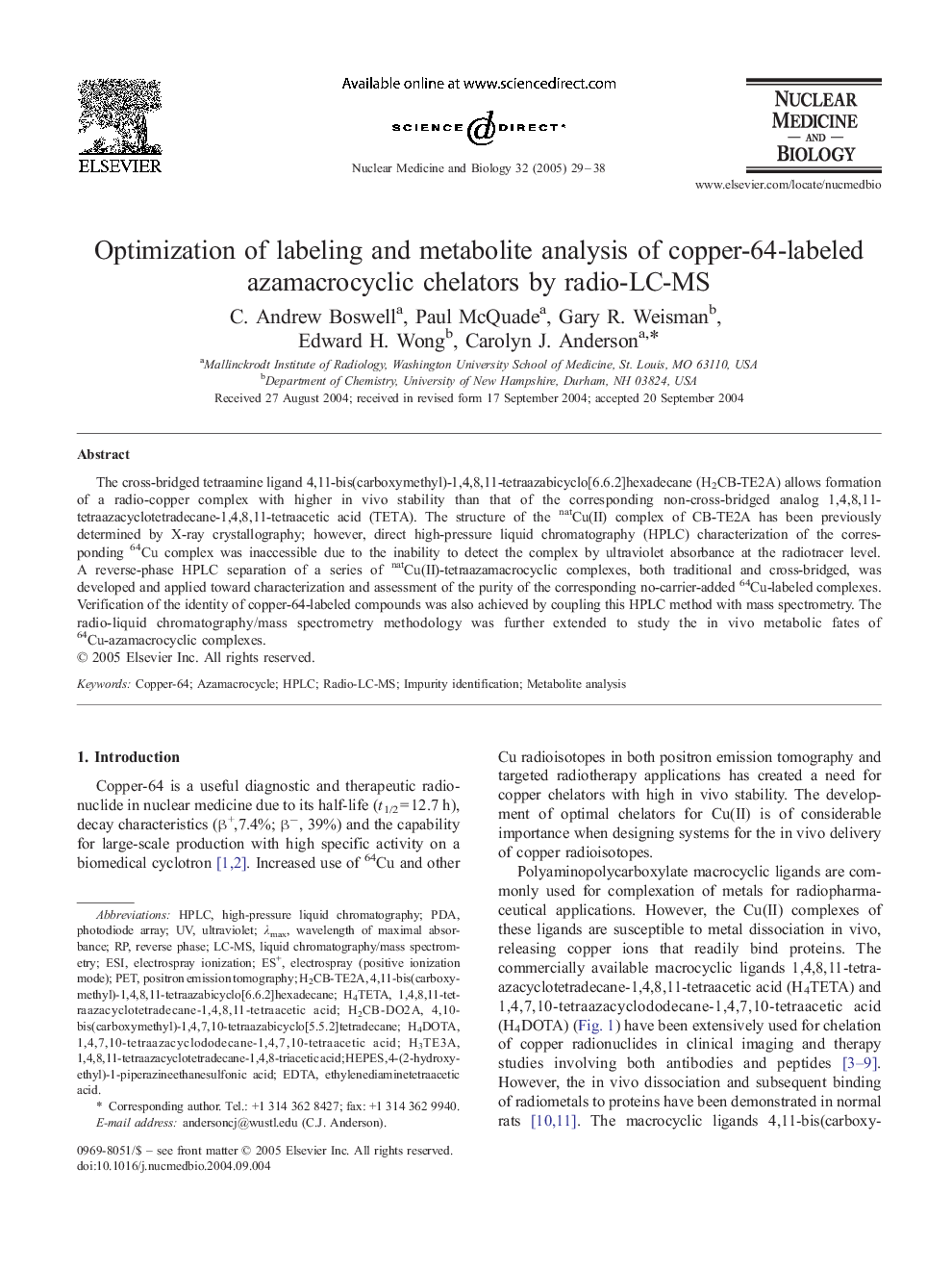| Article ID | Journal | Published Year | Pages | File Type |
|---|---|---|---|---|
| 10916383 | Nuclear Medicine and Biology | 2005 | 10 Pages |
Abstract
The cross-bridged tetraamine ligand 4,11-bis(carboxymethyl)-1,4,8,11-tetraazabicyclo[6.6.2]hexadecane (H2CB-TE2A) allows formation of a radio-copper complex with higher in vivo stability than that of the corresponding non-cross-bridged analog 1,4,8,11-tetraazacyclotetradecane-1,4,8,11-tetraacetic acid (TETA). The structure of the natCu(II) complex of CB-TE2A has been previously determined by X-ray crystallography; however, direct high-pressure liquid chromatography (HPLC) characterization of the corresponding 64Cu complex was inaccessible due to the inability to detect the complex by ultraviolet absorbance at the radiotracer level. A reverse-phase HPLC separation of a series of natCu(II)-tetraazamacrocyclic complexes, both traditional and cross-bridged, was developed and applied toward characterization and assessment of the purity of the corresponding no-carrier-added 64Cu-labeled complexes. Verification of the identity of copper-64-labeled compounds was also achieved by coupling this HPLC method with mass spectrometry. The radio-liquid chromatography/mass spectrometry methodology was further extended to study the in vivo metabolic fates of 64Cu-azamacrocyclic complexes.
Keywords
ESIRadio-LC-MSAzamacrocycleλmaxLC-MSPDAHEPES1,4,7,10-tetraazacyclododecane-1,4,7,10-tetraacetic acid4-(2-hydroxyethyl)-1-piperazineethanesulfonic acidphotodiode arrayEDTAEthylenediaminetetraacetic acidUltravioletMetabolite analysisPositron emission tomographyImpurity identificationReverse phaseCopper-64PETLiquid chromatography/mass spectrometryhigh-pressure liquid chromatographyHPLCelectrospray ionization
Related Topics
Life Sciences
Biochemistry, Genetics and Molecular Biology
Cancer Research
Authors
C. Andrew Boswell, Paul McQuade, Gary R. Weisman, Edward H. Wong, Carolyn J. Anderson,
